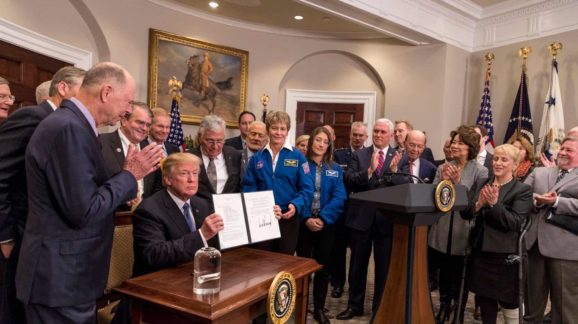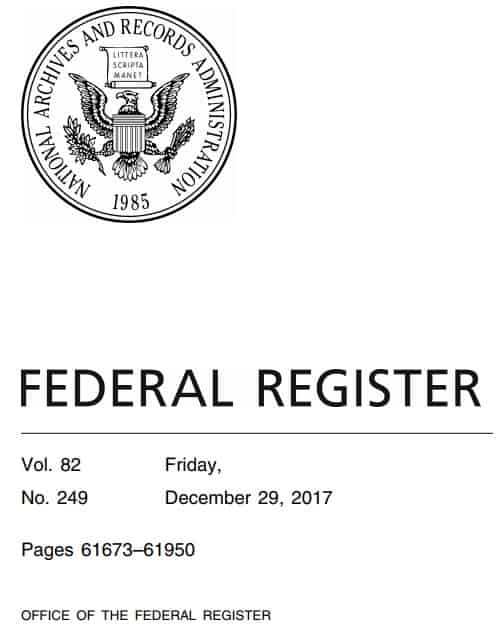Trump Regulations: Federal Register Page Count Is Lowest In Quarter Century

 Today, Friday, December 29, 2017, is the last federal workday of the year.
Today, Friday, December 29, 2017, is the last federal workday of the year.
This presents an opportunity to round up all rules and regulations produced by agencies appearing in the calendar-year 2017 Federal Register
The calendar year concluded with 61,950 pages in the Federal Register this morning. Here’s the cover.

This is the lowest count since 1993’s 61,166 pages. That was Bill Clinton’s first year, and his own lowest-ever count.
A year ago, Obama set the all-time Federal Register page record with 95,894 pages.
Trump’s Federal Register is a 35 percent drop from Obama’s record, set last year.
Bush and Reagan had lower Federal Register page counts than Trump; but every president since has easily outstripped Trump.
Here’s the breakdown since the first Bush. Clearly in all years since 1993, presidents have produced more pages in the Register than Trump.
Federal Number
Register of
Year Pages Rules POTUS
1989 50,501 4,714 Bush 1 years
1990 49,795 4,334
1991 57,973 4,416
1992 57,003 4,155
1993 61,166 4,369 Clinton years
1994 64,914 4,867
1995 62,645 4,713
1996 64,591 4,937
1997 64,549 4,584
1998 68,571 4,899
1999 71,161 4,684
2000 74,258 4,313
2001 64,438 4,132 Bush 2 years
2002 75,606 4,167
2003 71,269 4,148
2004 75,675 4,101
2005 73,870 3,975
2006 74,937 3,718
2007 72,090 3,595
2008 79,435 3,830
2009 68,598 3,503 Obama years
2010 81,405 3,573
2011 81,247 3,807
2012 78,961 3,708
2013 79,311 3,659
2014 77,687 3,554
2015 80,260 3,410
2016 95,894 3,853
2017 61,950 3,281 Trump
After the National Archives processes all the blank pages and skips in the 2017 Federal Register, Trump’s final count will ultimately be even lower.
Of course, the Federal Register may be a poor guide for regulation, but Washington doesn’t go out of its way to honestly measure itself and disclose regulatory impact.
The “problem” of assessing magnitude is even worse this year, because many of Trump’s “rules” are rules written to get rid of rules.
The Number of Rules and Regulations
There has also been a major reduction in the number of rules and regulations under Trump.
Today the Federal Register closed out with 3,281 final rules within its pages.
This is the lowest count since records began being kept in the mid-1970s.
Back in the 1990s, rule counts were regularly over 4,000, as seen here. Even Obama’s personal high count of 3,853 was below such stratospheric levels. Of course, some rules have more impact than others, and rules comprising fewer pages can have more effect than lengthy ones. Obama’s own lowest count was 3,410, but fewer of Obama’s rules would be expected to have been devoted to rollbacks of prior initiatives.
Even without congressional action on regulatory liberalization, Trump has made significant strides in reducing the pace of regulation. Rule counts and Federal Register pages are imperfect but useful gauges, and one hopes impel policymakers toward better measurements. As it stands, since a rule has to be written to get rid of a rule, the Federal Register and rule counts can both grow even in a deregulatory environment, unless Congress short-cuts the process with healthy reform legislation.